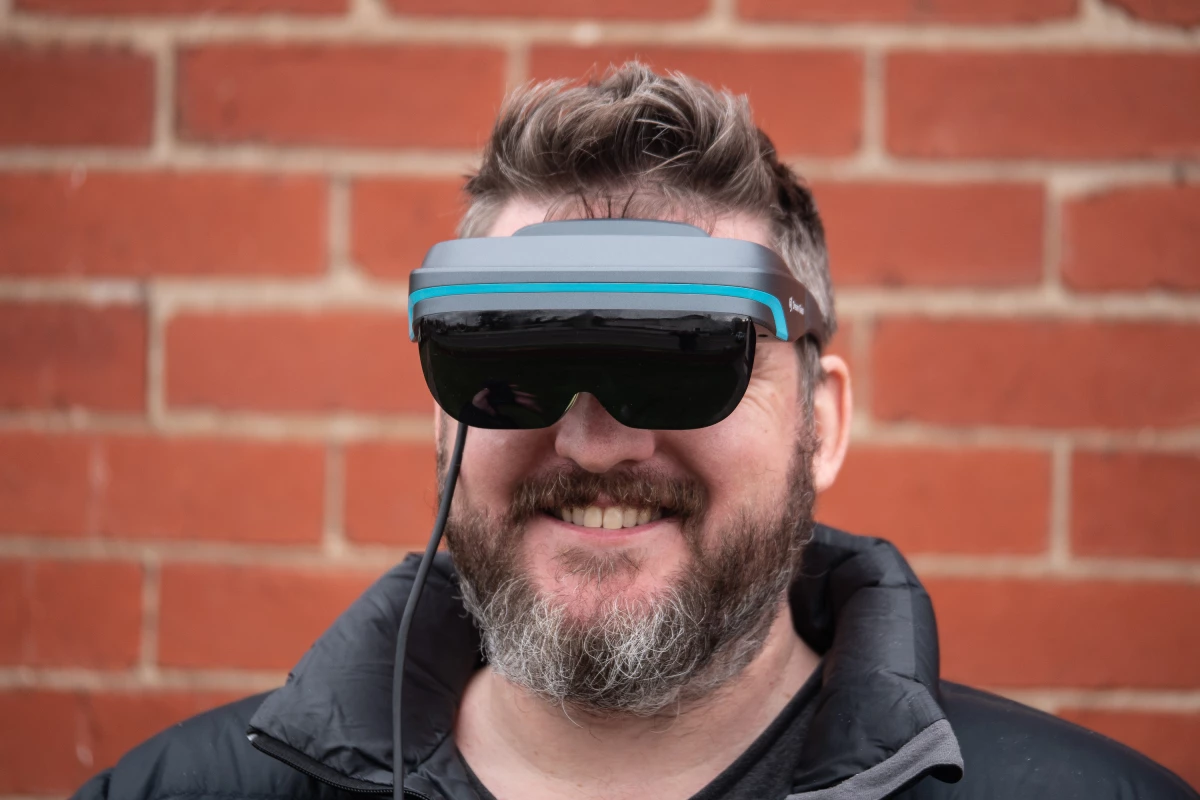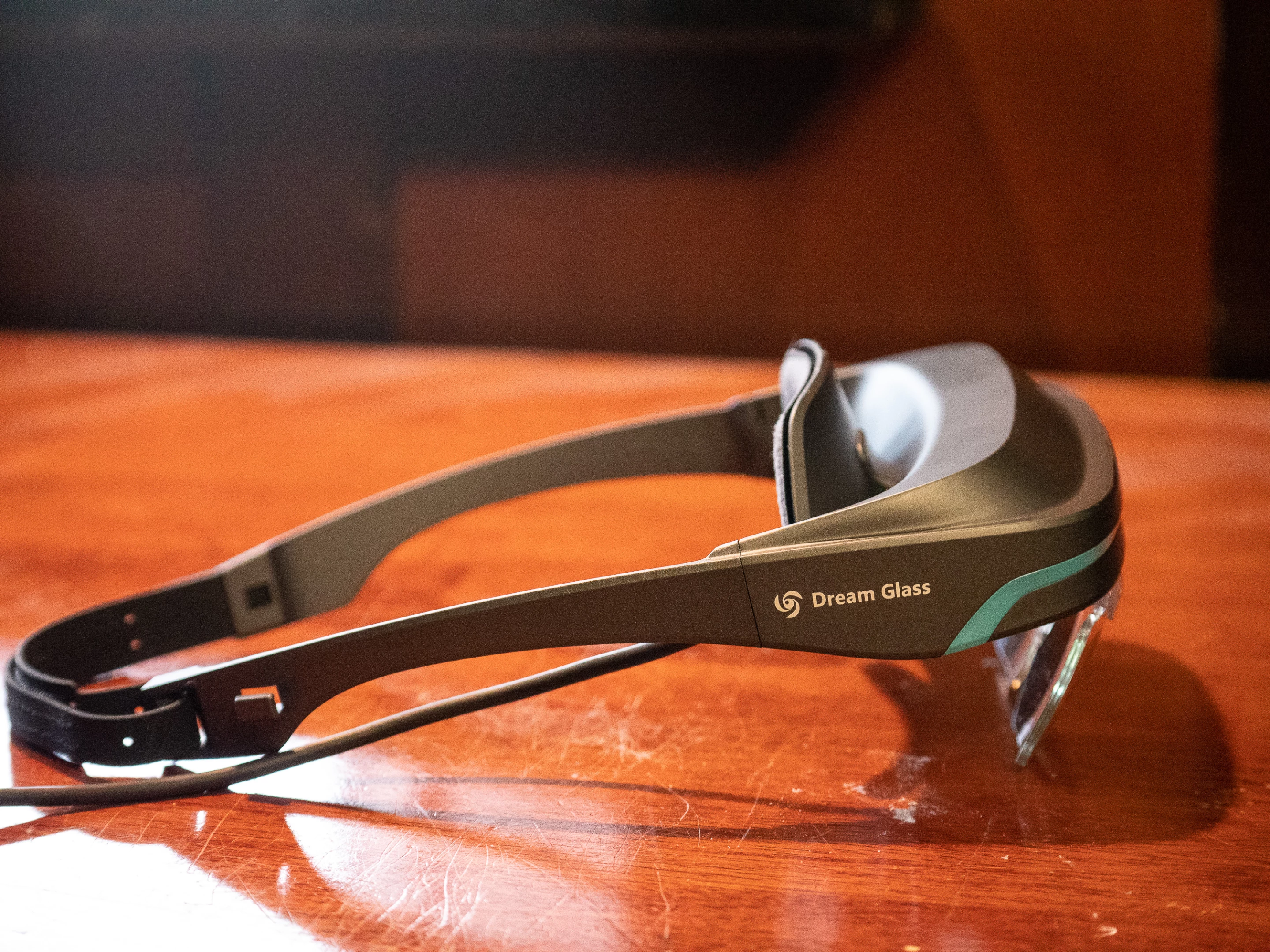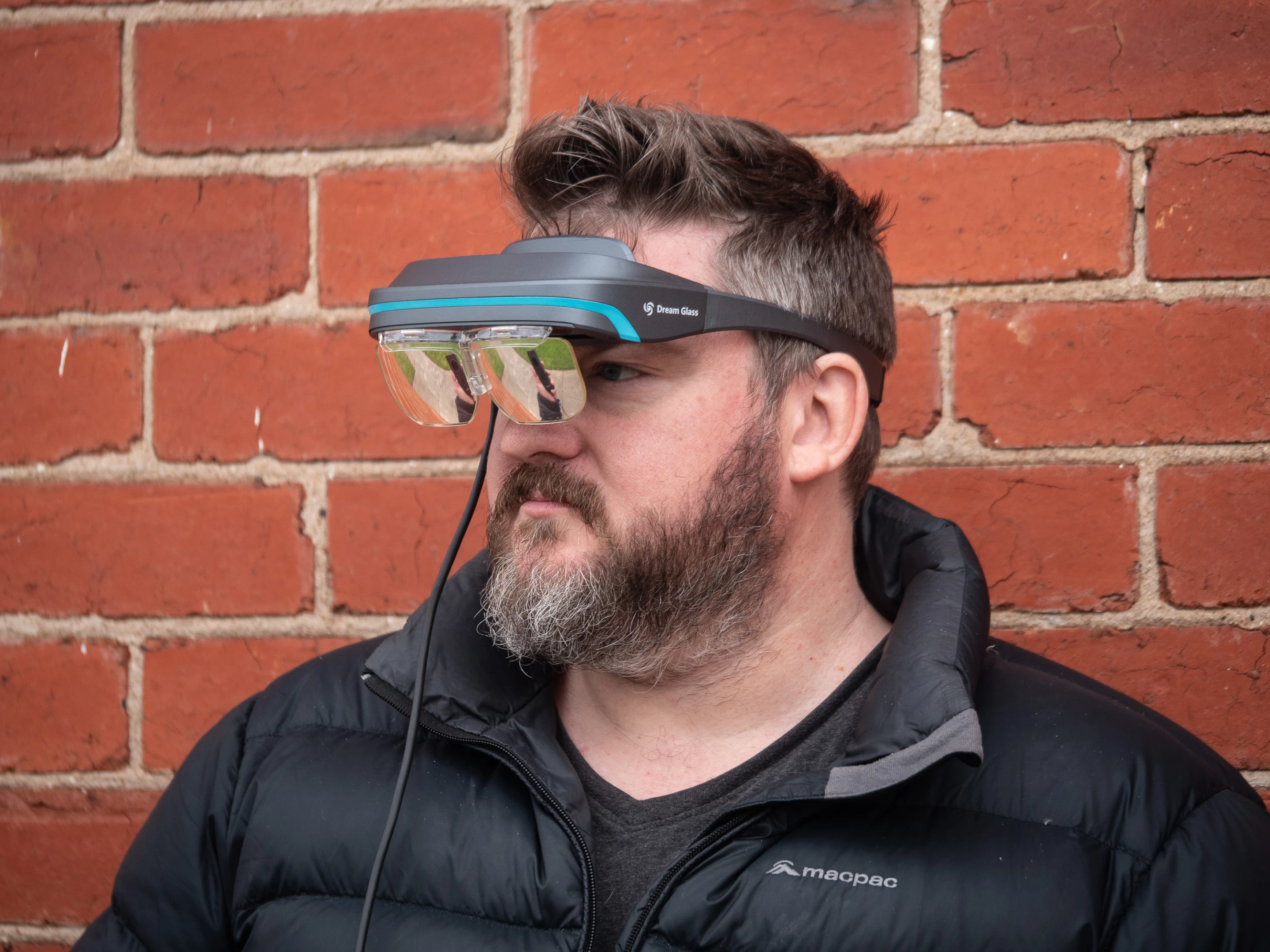I was asked on a questionnaire recently to nominate how much time I spend looking at screens daily, and thinking about it forced me to stare into the void. There were four options to choose from, and none approached the sad truth: during COVID lockdown, I'm more or less looking at one screen or another for the vast majority of my waking hours.
But such is the digital future, and I've spent the last week strapping yet another screen to my face to sample what the next level is like. The DreamGlass 4K is the second product from Californian company DreamGlass AR, and having smashed through its Indiegogo crowdfunding goal, it's well on the way to production.
It arrives as a little kit in a zip-up hard travel case. The two key parts are a control box, which stores the battery, computer and interface buttons, and the glasses themselves, which connect to the control box via a cable. The glasses project downward, then reflect their image directly into your eyes using a semi-reflective coating on a set of angled lenses. You can look through the image to the world behind it, or clip on a separate dark shade over the front and block out the world altogether.
Putting the headset on, it's reasonably comfortable. A weight of just 240 grams (8.5 oz) sits pretty easy on your forehead with room to spare for prescription glasses underneath. The thick cable running back to the control box can get a bit annoying, but once you're settled in, you forget about it.
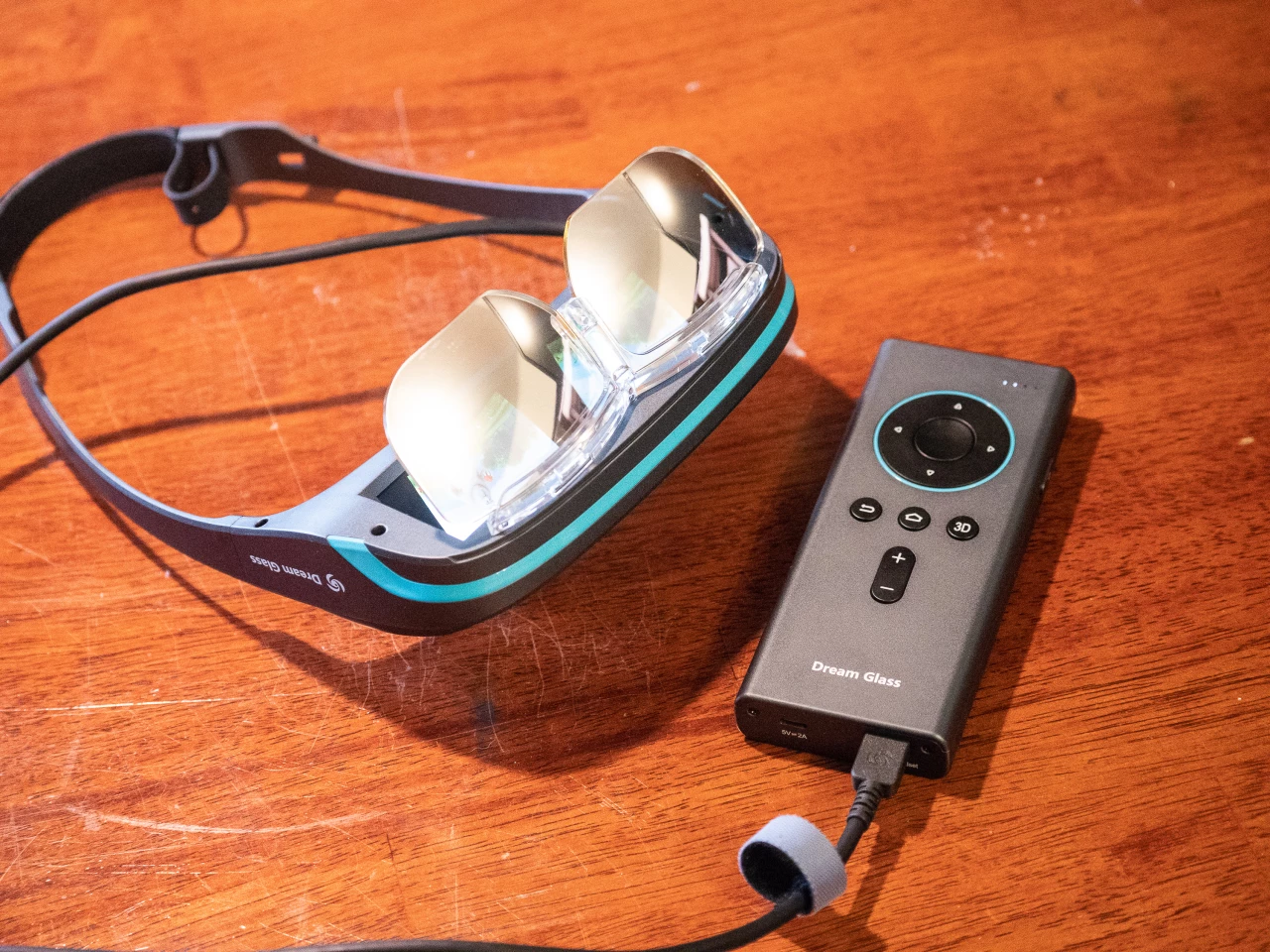
Switching it on, you're greeted with Dreamglass's own Android OS homepage, and a set of clunky buttons let you scroll through the options in lieu of a touchscreen. Here, you can set things like your eye pupil distance, which determines the separation of the images, as well as hooking up to Wi-Fi networks, making Bluetooth connections and accessing apps.
Most of these processes, to be honest, are pretty painful at this point. Entering email addresses and passwords using a pointer controlled by buttons is just not my idea of a good time. I feel like DreamGlass could really do with a smartphone app for the setup stuff, or perhaps a laptop-style touch pad on the control box to move a mouse pointer around. Still, once the job's done, it's done – and this unit is running on pre-production software, so some allowances can be made.
Probably the chief thing I was looking forward to was casting video content from my phone using screen mirroring, but the headset didn't come up as a casting option on my Pixel 3 XL. This feature, Dreamglass tells me, works with all Apple, Xiaomi, Vivo, Oppo and Black Shark phones. Samsung, Huawei and some other phones can use a third party video casting app like the Instantbits Web Video Caster, or by installing Miracast on the Dreamglass, but neither of those worked for me on a Google phone.
So instead, I used the apps in the Dreamglass system, which primarily run through the Aptoide TV and Puffin TV apps. Through these, Netflix and YouTube worked fine, although you have to deal with that button-controlled cursor to use them. Thus, while the viewing experience is very good, the user interface is a pain, since these apps are mostly designed to run with a touch screen or mouse. The Disney+ app kept crashing, and the team is looking into why; it shouldn't be a problem for long.
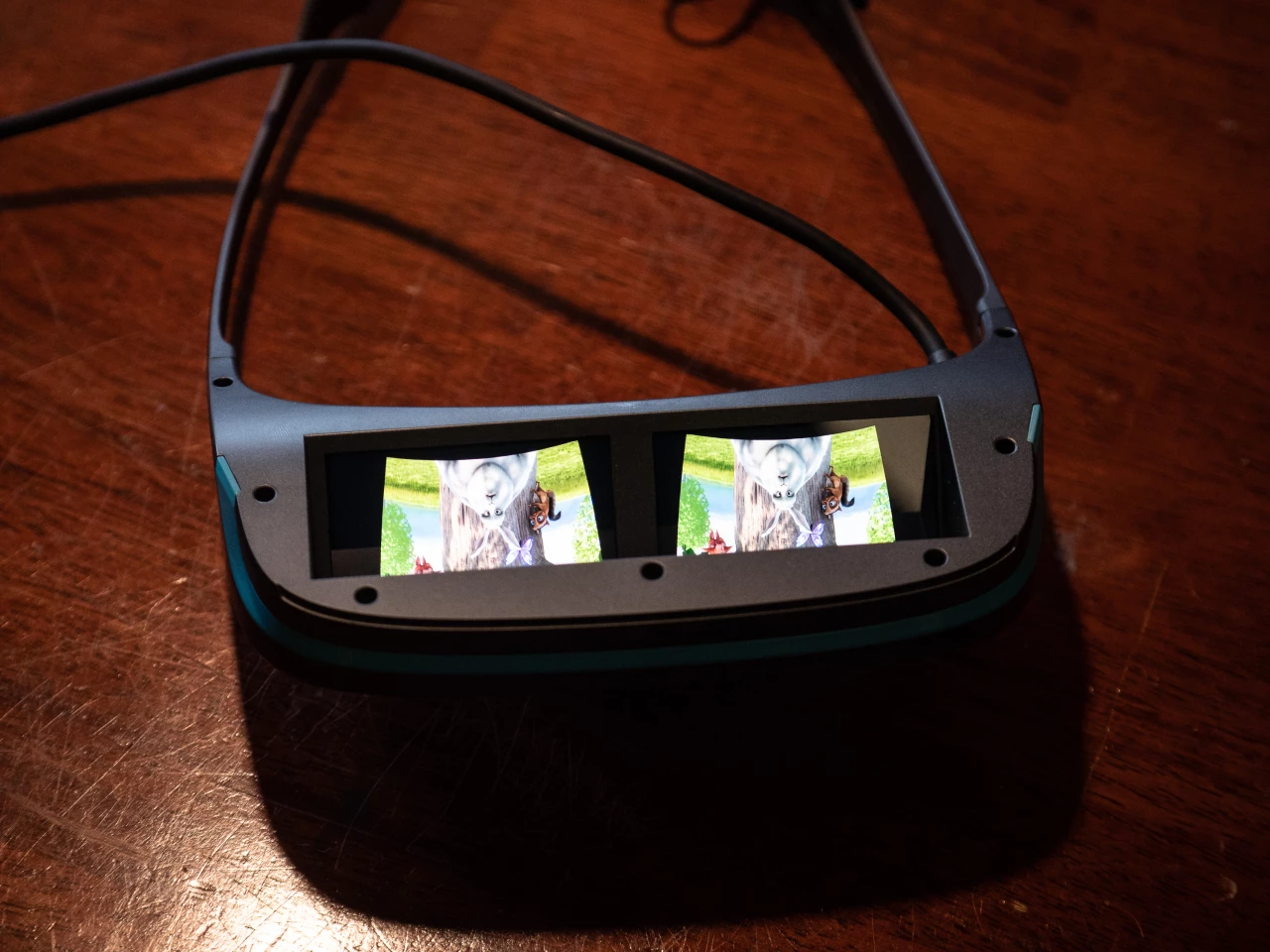
Dreamglass sells the 4K headset's 90-degree field of view as being the equivalent of a 200-inch UHD TV. Well, maybe if you're sitting on the other side of the room. Put it this way: to get the same image size using my 65-inch TV, I had to stand about 1.8 m (6 ft) away from the screen. To get the same image size with my Pixel 3 XL, I had to hold it about six inches from my face.
The screen itself is impressive, though. It's bright and sharp and the 1080p-per-eye (3840x1080 total) resolution is terrific – at least, until you get out towards the edges, where there's a small area blocked for each eye, which makes things hard to focus on at the peripheries. The angle is important, too; get it a tad wrong and the vision becomes blurry, or the screen starts distorting with the center down and the sides curling up like a grin. Get it right and it's tack-sharp and straight, and you can relax your eyes as you watch.
Colors are rich, contrast is good, particularly with the dark shade clipped on, and video content looks very nice. If you're watching a 3D video, you can switch into 3D mode, selecting between side by side and top/bottom formats to give you access to a wide range of content, and the 3D effect is lovely.
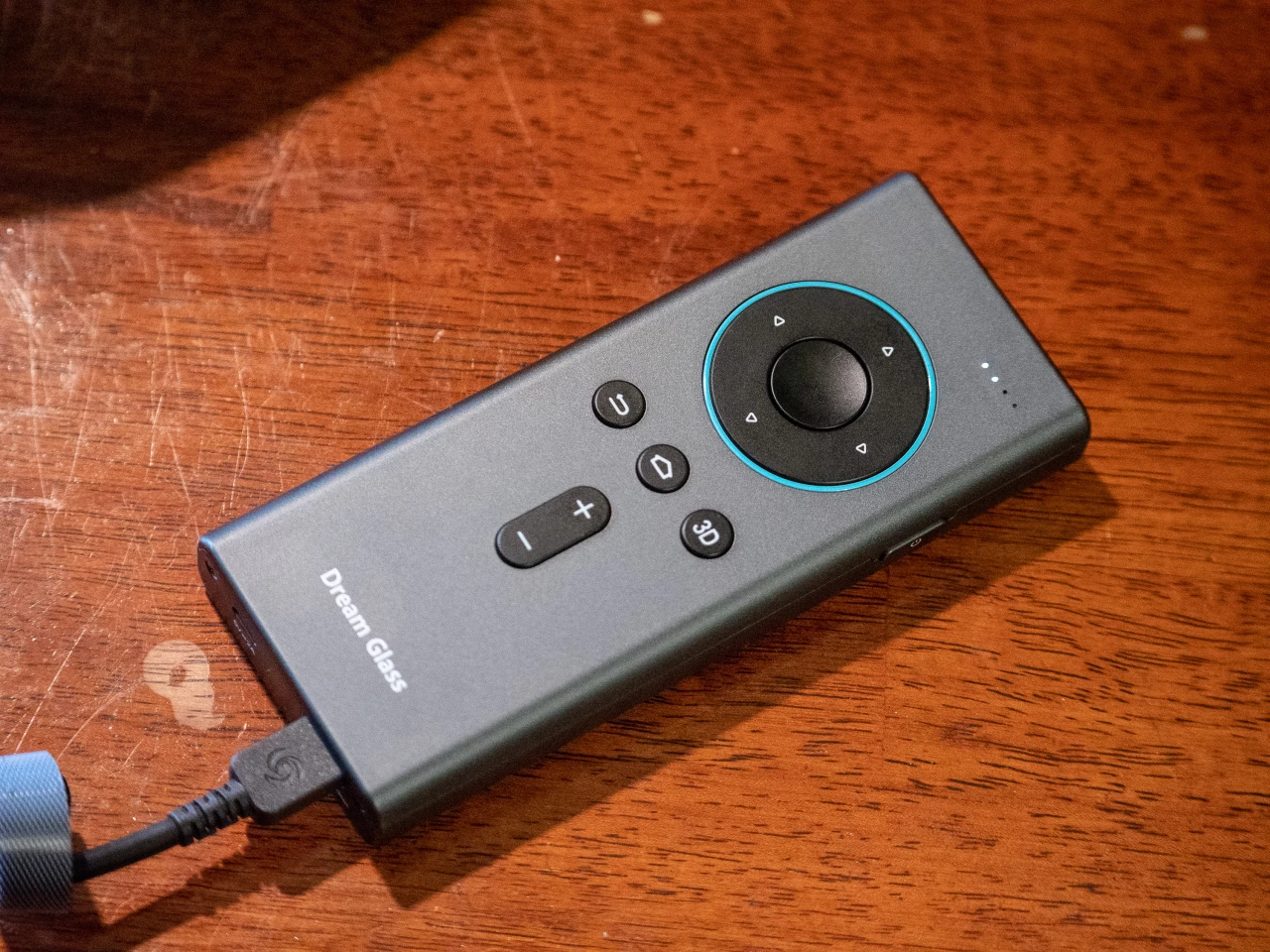
Sound is provided by a small, fairly tinny pair of speakers in the headset, which aren't going to rock your world. There is, however, a 3.5-mm jack. So if you've got a spare set of earbuds around you can plug those in and enjoy good stereo sound, at the price of an extra wire dangling around your head. Thankfully there's also Bluetooth connectivity for wireless earbuds too.
I then decided to plug it into my PS4 using the HDMI cable to crack on with a bit of Ghost of Tsushima and see how the DreamGlass 4K performs as a gaming machine. After all, plug this into a Nintendo Switch and you've got a fully portable, totally private big-screen gaming setup you can take on a plane or rock out with in bed.
Well, it's ... pretty good. The refresh rate of 60 Hz should be ample for my older PS4, but for some reason I found faster camera movements a little confusing to the eye, which made me a little uncomfortable during the whirling action scenes in the fast-paced samurai game. On a plane? Bring it on. At home? I still prefer the big TV.
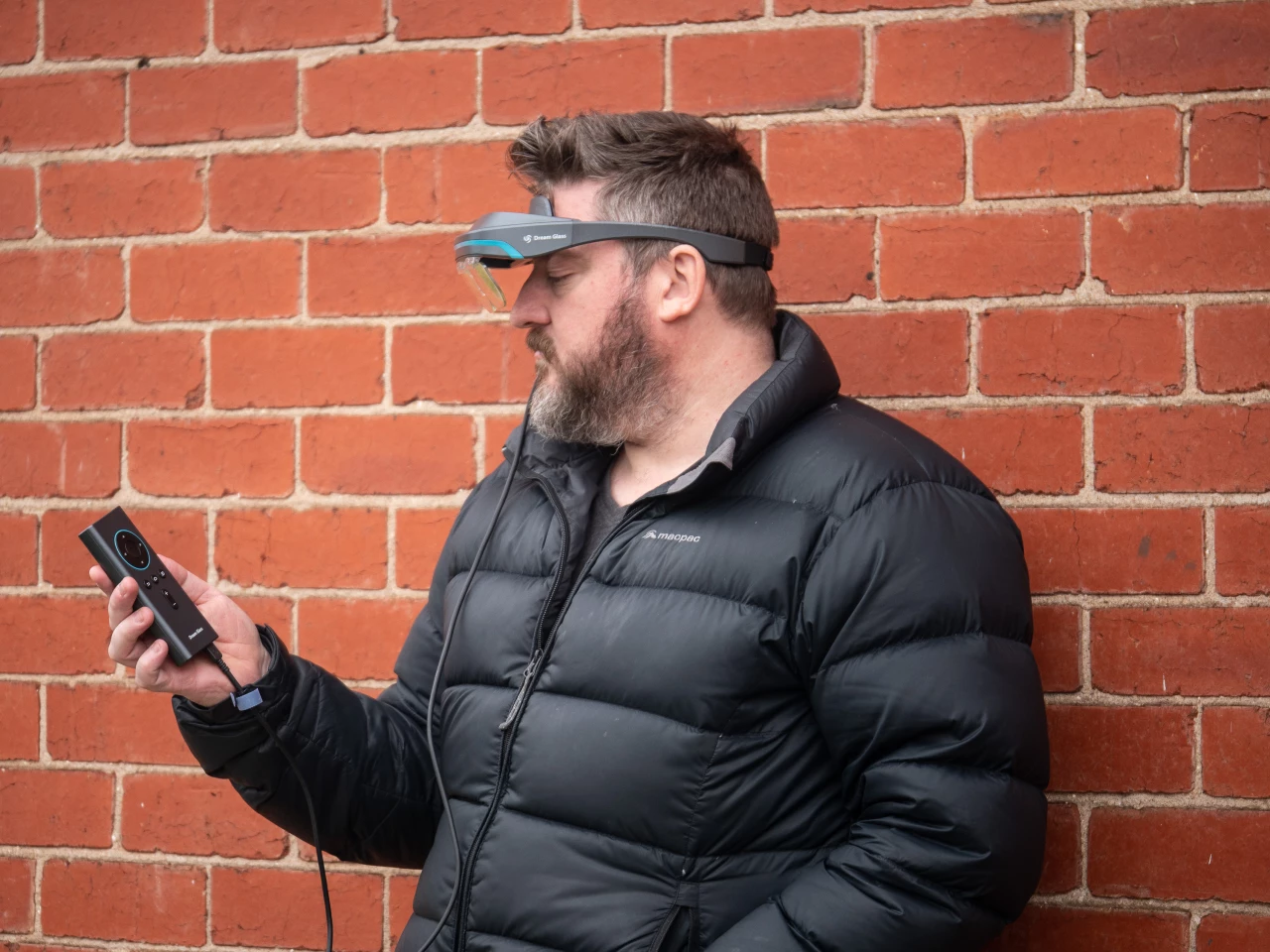
As a set of semi-see-through glasses with a 1080p front-facing camera, microphone and 3DOF head tracking, the Dreamglass 4K will be able to run augmented reality software, although this will have to be driven by developers. At this stage there seems to be only some demo software available.
This was not a final production version, it was a pre-production prototype. New capabilities are coming online in the lead up to production, including screen size adjustments, better cursor control and Wi-Fi file transfers, as well as some interface improvements. One improvement I'd suggest would be to change the current battery warning popups, which take up a large part of the screen and pop up for several seconds for every single percentage point drop below 15%. This cost my samurai his life more than once.
All in all, the DreamGlass 4K will do what it says on the tin for most users, but it still feels more early-adopter than game-changer. The AR screen itself is impressive, but the cable and control box are cumbersome enough to be an issue, and the button-controlled interface is simply not yet pleasant to use.
I suspect these kinds of glasses will have to become totally wireless and gesture-controlled – as well as a bit cooler looking – before they take over the world, but for those who want to be out on the leading edge, Dreamglass 4K offers a vision of things to come.
Dreamglass 4K is available now on Indiegogo for US$399, with deliveries scheduled to begin September this year. It has already smashed its crowdfunding goal 20 times over.
Source: Dreamglass 4K
